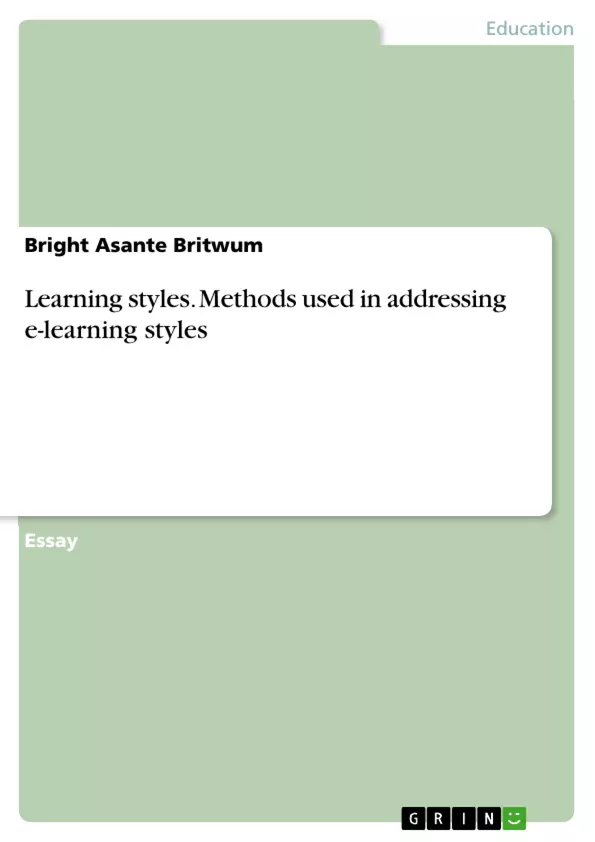People are thought to be unique in processing information, so teachers should understand the different learning styles of their students. Everyone has a prevailing learning style depending on the situation, and instructors need to realize what the preferred patterns of their students are in order to make it easier for the students to understand the learning process.
Understanding the learning styles of students will help students find the right way to learn and assess their strengths and weaknesses. In the same way, identifying the learning styles of the students will help the teacher to impact his or her lessons to suit all learning styles in the classroom. You will therefore have a clearer picture of the teaching and learning process and a greater awareness of the learning process.
Inhaltsverzeichnis (Table of Contents)
- SECTION A
- SECTION B
- SECTION C
Zielsetzung und Themenschwerpunkte (Objectives and Key Themes)
This text explores the concept of learning styles, particularly focusing on visual, auditory, and kinesthetic learning preferences. It aims to provide an understanding of the various learning styles and how they impact student learning.
- Learning styles and their impact on student learning
- Identifying and understanding individual learning preferences
- The importance of tailoring teaching methods to accommodate different learning styles
- The distribution of learning styles in a high school setting
- The significance of diverse learning styles in classroom environments
Zusammenfassung der Kapitel (Chapter Summaries)
- SECTION A: This section presents a table outlining the characteristics of visual, auditory, and kinesthetic learners across various domains, including spelling, reading, handwriting, memory, imagery, distractibility, problem-solving, response periods, and response to new situations.
- SECTION B: This section discusses the researcher's personal learning style based on a questionnaire and highlights the importance of accommodating diverse learning preferences in educational settings. It also provides a brief overview of the concept of learning styles and its implications for students.
- SECTION C: This section emphasizes the need for teachers to understand and cater to the different learning styles of their students. It presents data collected from a senior high school, showing the distribution of visual, auditory, and kinesthetic learners within the school population.
Schlüsselwörter (Keywords)
The text focuses on learning styles, particularly visual, auditory, and kinesthetic learning. Key themes include individual learning preferences, tailoring teaching methods, diverse learning styles, and classroom environments. The text also touches upon research findings related to learning style distribution and its implications for effective teaching practices.
- Quote paper
- Bright Asante Britwum (Author), 2020, Learning styles. Methods used in addressing e-learning styles, Munich, GRIN Verlag, https://www.grin.com/document/594815



